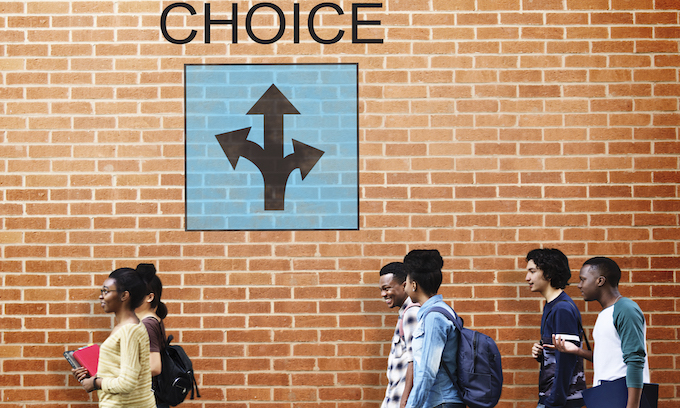(The Center Square) – North Carolina charter schools’ performance versus traditional public schools is better than the national average in reading and less in math, a Stanford study says.
The analysis, overall, boosts proponents of school choice in a state about to become the first in the nation without a Republican government trifecta to fund students over systems. Legislation is pending – expected to become law through budgeting or gubernatorial veto override – that would expand existing Opportunity Scholarships to all students to attend private schools or cover educational expenses through a tiered system based on income.
In North Carolina, the days of learning advantages were plus-13 in reading and minus-17 in math. In an analysis of academic growth, charter schools compared to traditional public schools were 25% stronger, 61% similar and 14% weaker in reading, and 25% stronger, 36% similar and 39% weaker in math.
Nationally, the days of learning advantages were plus-16 in reading and plus-6 in math. By grades, reading was plus-25 in high schools, plus-29 in middle schools and plus-24 in elementary schools; math was plus-31 in high schools, plus-29 in middle schools, and plus-17 in elementary schools.
The Stanford study began in 2009 when traditional public schools scored better in the analysis than charters. The latest edition was released Tuesday. The executive summary says, in part, “Our work deliberately focuses on a specific outcome: the annual progress that students make over an academic year. In this report, we look at students in charter schools compared to the experience they would have had in the TPS they would have otherwise attended.”
In explaining its methodology, the report says in part, “To conduct a fair analysis, this study followed the approach of our previous studies looking at the academic growth of individual students as reflected in their performance on state achievement tests in both reading and math. To ensure accurate estimates of charter school enrollment on student academic growth, we used statistical methods to neutralize the influence of student demographics and eligibility for categorical program support, such as free or reduced-price lunch eligibility and special education. In this way, we structured the analysis so that differences in academic growth between the two groups are a function of which schools they attended.”
Demographic details are part of the report.
West Virginia, Arizona, Iowa, Utah, Arkansas, Florida and Oklahoma provide universal school choice. North Carolina legislation, House Bill 823 and Senate Bill 406, is moving through committees with full Republican support that translates to an ability to override a gubernatorial veto.
HB823 is in the Committee on Rules and Operations of the Senate; SB406 is in the Committee on Appropriations/Base Budget of the Senate.
Democrats have decried public funds for private schools. The North Carolina Association of Educators and other traditional public school advocates also oppose the change for the same reason. Democratic Gov. Roy Cooper, lame duck in status the next 19 months, has tried to use his position as a bully pulpit against the legislation and has been criticized in part because one of his three daughters graduated from a private school.
Speaking to The Center Square last month, Mike Long of Parents for Education Freedom in North Carolina said, “This is an incredible step towards funding students over systems in North Carolina, as leaders now in the state House and Senate are moving on legislation that will further empower families to place their tax dollars into their child’s backpack, allowing them to attend the school of their choice. We were excited to see the House Education Committee give a favorable review to the bill.”
The Stanford study, its third in 15 years, says it is essential because, in part, “The 2022 results from the National Assessment of Educational Progress removed any ambiguity about student learning after the COVID-19 pandemic. As a country, student academic performance has regressed by two decades in math and fallen steeply in reading, with the most severe performance declines found among minority, poverty and special needs populations that were already struggling before the pandemic.”



















The anti-crowd won’t care, AS THEY SEE NO FACTS> Only their agenda.
In a way I’m Against school choice. I don’t want them around our children anymore. I want our children safe and educated. A few months back a big fight broke out at a high school involving them. Last year they brought guns to school and now we much lower standards. I’m just at that point